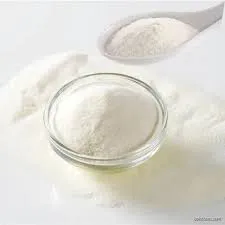- Afrikaans
- Albanian
- Amharic
- Arabic
- Armenian
- Azerbaijani
- Basque
- Belarusian
- Bengali
- Bosnian
- Bulgarian
- Catalan
- Cebuano
- Corsican
- Croatian
- Czech
- Danish
- Dutch
- English
- Esperanto
- Estonian
- Finnish
- French
- Frisian
- Galician
- Georgian
- German
- Greek
- Gujarati
- Haitian Creole
- hausa
- hawaiian
- Hebrew
- Hindi
- Miao
- Hungarian
- Icelandic
- igbo
- Indonesian
- irish
- Italian
- Japanese
- Javanese
- Kannada
- kazakh
- Khmer
- Rwandese
- Korean
- Kurdish
- Kyrgyz
- Lao
- Latin
- Latvian
- Lithuanian
- Luxembourgish
- Macedonian
- Malgashi
- Malay
- Malayalam
- Maltese
- Maori
- Marathi
- Mongolian
- Myanmar
- Nepali
- Norwegian
- Norwegian
- Occitan
- Pashto
- Persian
- Polish
- Portuguese
- Punjabi
- Romanian
- Russian
- Samoan
- Scottish Gaelic
- Serbian
- Sesotho
- Shona
- Sindhi
- Sinhala
- Slovak
- Slovenian
- Somali
- Spanish
- Sundanese
- Swahili
- Swedish
- Tagalog
- Tajik
- Tamil
- Tatar
- Telugu
- Thai
- Turkish
- Turkmen
- Ukrainian
- Urdu
- Uighur
- Uzbek
- Vietnamese
- Welsh
- Bantu
- Yiddish
- Yoruba
- Zulu
නොවැ. . 09, 2024 13:33 Back to list
Tylosin 200 Injection for Veterinary Use and Treatment Protocols
Tylosin 200 Injection An Overview
Tylosin 200 injection is a veterinary antibiotic that serves as an essential tool in the treatment and prevention of various bacterial infections in livestock and poultry. Tylosin is a macrolide antibiotic that effectively combats a broad spectrum of gram-positive bacteria and some gram-negative organisms. This article explores the applications, advantages, dosage, and safety considerations related to tylosin 200 injection, highlighting its significance in veterinary medicine.
Applications
Tylosin 200 injection is commonly used in animals such as cattle, pigs, and poultry. It is effective in the treatment of respiratory disease, enteritis, and infections caused by Mycoplasma species, which are known to be significant pathogens in livestock. Additionally, tylosin is often employed in controlling the spread of diseases like swine pleuropneumonia and avian mycoplasmosis. The drug can be used both therapeutically to manage existing infections and prophylactically to prevent disease outbreaks in animal populations.
Mechanism of Action
Tylosin works by inhibiting bacterial protein synthesis. It binds to the 50S subunit of the bacterial ribosome, blocking the process of translation, which is essential for bacterial growth and reproduction. This action not only halts the growth of existing bacteria but also prevents the formation of new bacterial cells. Tylosin's effectiveness is enhanced by its ability to reach high concentrations in tissues, allowing for targeted action against pathogens in infected animals.
Dosage and Administration
The dosage of tylosin 200 injection typically varies depending on the species, weight of the animal, and the severity of the infection. In general, it is administered subcutaneously or intramuscularly. A veterinarian's guidance is crucial in determining the appropriate dosage and treatment duration. Overdosing can lead to adverse effects or bacterial resistance, which underscores the need for careful administration in veterinary practice.
tylosin 200 injection

Advantages
One of the key advantages of tylosin 200 injection is its relatively low toxicity compared to other antibiotics. This feature makes it a preferred choice for treating many infections in animals, as it can be safely used without causing significant adverse effects. Additionally, the fast-acting nature of tylosin ensures that improvement in the health of the treated animals can be observed shortly after administration.
Moreover, tylosin is effective against various pathogens, making it a versatile option for managing diseases in livestock, thereby improving animal health and productivity. Healthy animals contribute to increased production levels, which is crucial for meeting the growing food demand globally.
Safety and Considerations
While tylosin 200 injection is generally safe, there are some considerations to keep in mind. It is important to adhere to the recommended withdrawal periods before slaughtering animals treated with tylosin. This is to ensure that drug residues do not enter the food supply, as they can pose risks to consumer health. Monitoring for any potential side effects, such as gastrointestinal upset or allergic reactions, is also essential.
Furthermore, the rise of antibiotic resistance is a significant concern in veterinary medicine. To mitigate this risk, tylosin should only be used when prescribed by a veterinarian and not for growth promotion purposes, as its overuse in agriculture has contributed to the problem of resistance.
Conclusion
Tylosin 200 injection is a vital component of veterinary medicine, providing effective treatment for a range of bacterial infections in livestock and poultry. Its mechanism of action, low toxicity, and broad application make it an indispensable tool for farmers and veterinarians alike. However, responsible use and adherence to safety guidelines are crucial to maintain its efficacy and safeguard both animal and public health. As the agriculture sector continues to evolve with the challenges of disease management, tylosin 200 injection stands as a critical ally in ensuring the health and productivity of livestock.
-
Guide to Oxytetracycline Injection
NewsMar.27,2025
-
Guide to Colistin Sulphate
NewsMar.27,2025
-
Gentamicin Sulfate: Uses, Price, And Key Information
NewsMar.27,2025
-
Enrofloxacin Injection: Uses, Price, And Supplier Information
NewsMar.27,2025
-
Dexamethasone Sodium Phosphate Injection: Uses, Price, And Key Information
NewsMar.27,2025
-
Albendazole Tablet: Uses, Dosage, Cost, And Key Information
NewsMar.27,2025













